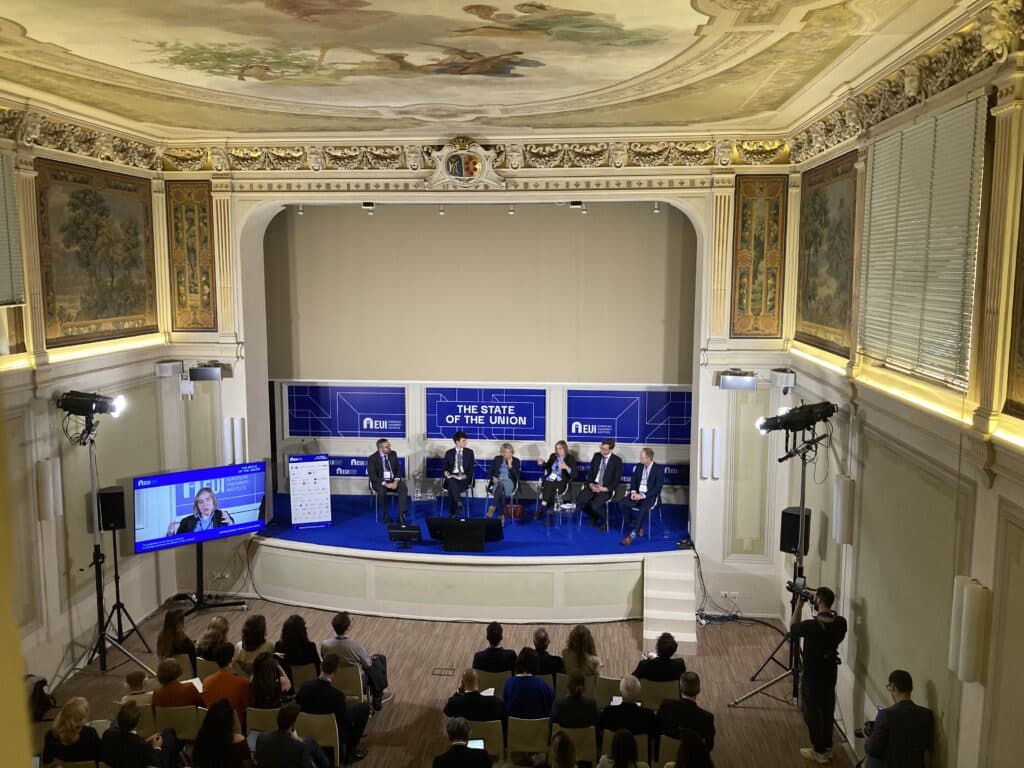FSR Topic of the Month:
Network Codes & Guidelines. A legal perspective.
by Lavinia-Petronela Tanase (FSR)
Week 1: Network Codes versus Guidelines
Pursuant to the 3rd Energy Package, the aims of market integration, decarbonisation, competitiveness and security of supply are to be achieved through the correct implementation of the electricity network codes (NCs) and guidelines (GLs). The electricity market and transmission system are regulated via eight regulations, four NCs (Demand Connection Code, Requirement for Generators, High Voltage Direct Current, Emergency and Restoration) and four GLs (Capacity Allocation and Congestion Management, Electricity Balancing, Forward Capacity Allocation, System Operation). These EU Regulations are very innovative pieces of legislation, directly applicable and enforceable within the Member States. They deal with cross-border and market integration issues and they shall be without prejudice to the Member States` right to establish national network codes which do not affect cross-border trade.[1]
NCs and GLs are technical rules, adopted by the European Commission through the Regulatory Procedure with Scrutiny (`RPS`), also known as the `Comitology Procedure`.[2] The European Commission resorts to a specialised electricity cross-border committee to issue a positive or a negative opinion on the draft NC or GL. Then, the European Parliament and the Council play an important part in the adoption process, as they will scrutinize the draft Regulations and express their veto rights on three grounds only: (i) the draft NC exceeds the implementing powers offered to the Commission through the Third Energy Package or (ii) that the draft is not compatible with the aim or content of Regulation 714/2009 or (iii) the draft Network Code does not respect the principles of proportionality and subsidiarity.[3] Basically, either the EP or the Council can block the measure, in approximately 3 months after the electricity cross-border Committee has approved the proposed NC or GL.
Even though they follow the same adoption procedure, the differences between the two are manifold, as follows:
- Different legal basis: NCs are adopted pursuant to the provisions of Article 6 of Regulation 714/2009, whereas GLs are to Article 18 of the same. Article 6 provides all the steps that the institutions involved, namely the European Commission, the Agency for the Cooperation of Energy Regulators (`ACER`) and European Network for Transmission System Operators for Electricity (`ENTSO-E`) shall take in order to develop the draft regulation. Article 18 contains obligations of a more general nature, hence not they less explicitly outline the specific steps that the EC shall follow in the development process.
- Different development process: according to Article 6(1) of Regulation 714/2009, the EC shall trigger the development process of a future NC pursuant to the establishment of an annual priority list which identifies the areas to be included in the development of NCs (ie. network security and reliability, network connection, third-party access, data exchange and settlement, interoperability, operational procedures in the emergency, capacity allocation and congestion management, rules for trading related to the technical and operational provision of network access services, system balancing rules). The EC can also develop Guidelines on the same topics, however, the EC can look beyond that list and touch upon other topics as well, as per Article 18 of Regulation 714/2009 (ie. details for determining which transmission system operators are liable to pay compensation for cross-border flows, appropriate rules for the progressive harmonisation of the underlying principles which set the charges applied to producers and consumers under national tariff systems, details of rules for the trading of electricity, details of investment incentive rules for interconnector capacity). Overall, it can be observed that EC might value wider discretion when it comes to the adoption of GLs, under the overarching purpose of ensuring a well-functioning Internal Energy Market.
- Different amendment process: the amendment procedure for NCs is clearly set out in Article 7 Regulation 714/2009, whereas the prerogative to amend a GL is provided for in Article 18(5). In the case of NCs, Article 7 of Regulation 714/2009 establishes the right of ACER to submit draft amendments to the EC, by its own initiative or at the request of any other interested person (ie. TSOs, ENTSO-E, system users and consumers). The EC can also propose amendments.[4] ACER thus will organise an extended consultation period [5], after which will make reasoned proposals for the amendment to the EC. In this particular situation, the EC will have to follow the same Regulatory Procedure with Scrutiny and submit the draft proposals for amendments to the Comitology. On the other hand, as for the amendment of Guidelines, according to Article 18(5) Electricity Regulation: it shall be done directly by the EC, without the direct involvement of ACER, ENTSO-E or other stakeholders, or by amending its subsequent methodologies.[6] The amendment of the Guidelines is a much more opaque process, as (i) the regulation does not set out a specific, clear process and (ii) the EC can directly adopt amendments, by-passing thus the specific rules for the involvement of stakeholders, laid out for amendment of NCs.
- Flexibility: NCs, on the one hand, regulate topics mainly related to the reliability of the transmission network, whereas, on the other hand, the GLs deal with market and operation issues, closer to real-time operation of the market. Thus, one can assume that while the topics of the NC are fixed, and a bit rigid in substance (ie. emergency and restoration protocols, requirements for generators, demand connection), the GLs expand on details of the fast-paced development of the electricity markets in different timeframes (ie. day-ahead, intraday, forward capacity allocation). Hence, the GLs can be seen as a means to foster the flexibility of the regulatory framework to meet the rapid technological and market advancements.
All in all, these differences between the two types of legal instruments do not change their legal value: remember, they are EU regulations, directly applicable and enforceable in the Member States. What is important to note though is that the market and operation GLs enshrine even more flexibility through the adoption of further Terms Conditions and Methodologies (TCMs). These TCMs are used to regulate detailed aspects of the market and system operation. For this reason, the next blog post in July will focus on the role, adoption process and the importance of these documents.
[1] Article 8(7) Regulation 714/2009 of the European Parliament and of the Council of 13 July 2009 on conditions for access to the network for cross-border exchanges in electricity, L211/15 (`Regulation 714/2009`)
[2] Council Decision of 28 June 1999 laying down the procedures for the exercise of implementing powers conferred on the Commission, as amended by Council Decision 2006/512/EC of 17 July 2006, OJ L 184, 17.07.1999 (`Council Decision 1999/468/EC`)
[3] Article 5(a)4(e) Council Decision 1999/468/EC
[4] Article 7(4) Regulation 714/2009
[5] Article 10 Regulation 714/2009
[6] L. Meeus, T. Schittekatte, EU Electricity Network Codes, Technical Report, February 2018






